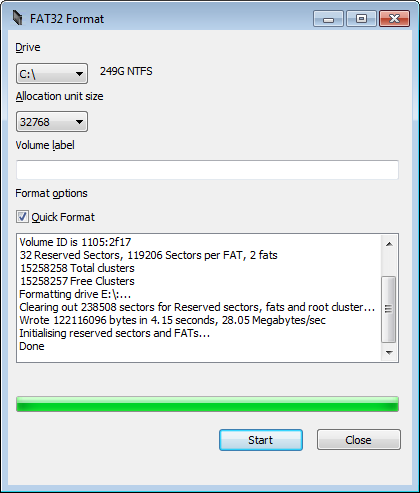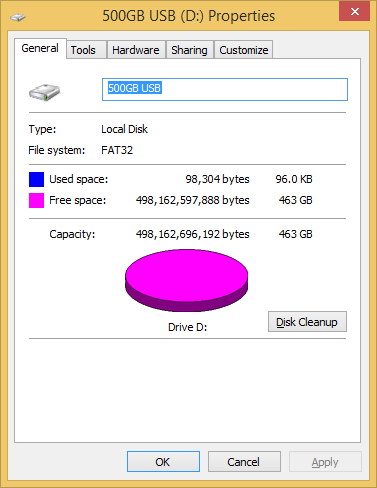I recently discovered that a brand new USB hard drive promoted as “Apple Mac compatible” was formatted using the NTFS file system.
For the non-technical, this file system was created by Microsoft for their Windows operating system and has limited compatibility on non-Windows devices.
Usually these Apple Mac compatible drives would be formatted as FAT32 – allowing the drive to be used in both Windows and Mac systems.
Easy fix? Format it as FAT32 you say? There’s a 32GB limit in Windows for FAT32 – meaning any drive (or partition) larger than 32GB cannot be formatted as FAT32 using their standard formatting tool.
Fortunately there is an answer – a tool called FAT32 Format.
This very basic tool will allow you to select your drive and perform a quick format as FAT32, regardless of the drive (or partition) size.
Highly recommended, save it to your goodies folder – it’s sure to come to your rescue.
Instructions
PLEASE NOTE: this process will erase all the contents on the drive. This is necessary to change the format or increase the size beyond the 32 GB limit. If there’s anything important on the drive BACK UP before continuing.
- Download and run the fat32 tool from here: http://ridgecrop.co.uk/index.htm?guiformat.htm
- Under ‘Drive’ select the drive letter which you want to format – e.g. D:
- Under ‘Volume label’ enter a suitable name
- Click ‘Start’ and finally ‘OK’ to begin
- The process will take about a complete.
Just a note about the FAT32 file system – whilst it does allow you to use a drive between a Windows PC and Apple Mac system it does have other limitations – it was after all it was invented in 1996! Most importantly,
- individual files which can be saved to the drive are limited to 4 GB
- partitions are limited to 2 TB (using 512 byte sectors) or 16 TB (using 4096 byte sectors)
- it doesn’t support the access control list (ACL) that NTFS does – making it useless for backing up files if you want to retain the security permissions placed on files and folders

